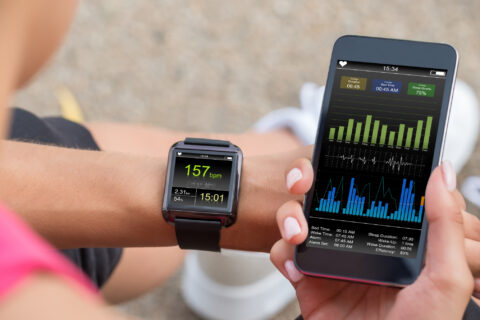Coaches Trevor Connor and Ryan Kohler analyze data from longer threshold efforts to support results garnered from the popular 20-minute power test.
Video Transcript
Intro 00:16
Welcome to Fast Talk Laboratories, your source for the science of cycling performance.
Ryan Kohler 00:24
Hey, everybody, Coach Ryan here with Coach Trevor, and we’re gonna talk to you today about, kind of a follow up on the 20-minute power, so if you’ve seen that one, where Trevor pulls out numbers from the 20-minute test, this would kind of complement that, where we’ll look at longer efforts and see what we can pull out as far as sustainable numbers from that. So, you’ll see here I’ve got a couple of screens to show, so this part that’s blocked up here is kind of the last piece that I want to look at, but I want to go back and start with the 20-minute effort, and then progress to longer efforts. So, the goal here is really to look at, okay, we do these 20-minute efforts, what kind of information do we get out of that? And what does that tell us about our threshold, or FTP or that sustainable power? But really, you know, as a lot of us compete in events well beyond an hour, you know, what else can we look at, to find useful information and really find like, what’s a reasonable power that we can sustain over the long-term.
What Information do we get From 20-Minute Efforts?
Ryan Kohler 01:26
This first graph here, what we have is a 20-minute time trial, right? So, you can see it’s up a climb, it’s, you know, local climb here in Boulder. So, I’ve got this one blocked out, and if we just look at some of the metrics, here, we’ve got average power of 318, we’ve got the heart rate, we can see 170 average, 177 Max, we know it was a good hard effort, right? So, this was a good test, we can say, yeah, this is great, it was a nice peak performance. So great, this is a good effort. What might think about doing is, you know, doing the .95 and saying, “Okay, well, great my power is, you know, 95% of this, and that’s my FTP,” but not necessarily, right? So, one thing, this is also missing that five-minute blowout session before, so we of course, can’t take that 95% of it. So even if we say like 90%, you know, just as a rough estimate, then that would put us somewhere, I think I had this in the, you know, 280 range, roughly. So still a pretty strong threshold if we were to set the threshold around that, but what I want to make sure we do is look at more data. So, this is great, I think this is almost one of those, like feel good efforts, where you just had a really good day, what I set my threshold off this, not necessarily. So, this I want to put into context of the racing that that we’re doing, and some of the longer efforts that are going to be required. So, you know, let’s just make sure we have these numbers here, set 318 average, say we take about 90% of that, we’re looking at threshold, you know, somewhere in the 280s, Right? So now, what I like to do is then take this and say, let’s go do some longer efforts, let’s go out for, you know, a couple hours, and we might do a climb or something else where we can just get a good-sustained effort to say, “Well, what can you really do for a long time without a lot of fatigue creeping in.”
What Information do we get From 90-Minute Efforts?
Ryan Kohler 03:29
So, this next segment, is another boulder ride, and we’ve got this segment blocked off here for this portion of the climb, it’s a fairly long climb. And if we go over here, we can see this is about an hour and a half duration, and we look over here and we say all right, well, we averaged about 212 watts, heart rate was fairly well contained there, you can see there were some higher peaks, and of course, when it got steeper, the heart rate creeped up, some of those lower slopes were a little bit harder. But overall, that power, once we settled in on this climb was fairly well maintained. So I look at this, and I say Alright, great, 212 watts, that was doable for an hour and a half, that’s great, right? So that gives me confidence to say, okay, well, when we’re out in this in a race, then I know that’s totally reasonable is to see 212 watts average, and 155 beats, you know, for a good long effort.
What is a Sustainable Effort in the Middle of a Race?
Ryan Kohler 04:24
So, then the application piece comes in, so what I’m going to do is pull out this next piece of data from a race, and we can see here we’ve got this again, long climb blocked off, and you can see it’s yeah, pretty good segment about five and a half miles, this is a little a little bit under an hour, but it’s also halfway through a race where we see a lot of hard efforts throughout. We’ve already done a lot of climbing heart rate is pretty well pegged in the 160s touching on the Upper 160s, and then we get to this climb. So, this is a place where, you know, being able to figure out what is that sustainable effort, you know, I like to look at some of these longer efforts to really help figure that out, and then get that kind of that span to say, Alright, well, you on a good day, sure, maybe threshold FTP is more like 280 to 290, and that’s totally reasonable. In the middle of a race, what’s reasonable? You know, if this were, if we were to try to hold to 280-290, it’s probably not going to happen, or we’re just going to completely crack in those last miles of this race. So, looking here, what we see is average power is about 211, right? And if we go back to this effort over here, for this hour and a half long climb, this was to 212. So, we settle into this area that is comfortable enough that we can sustain it, but it’s still hard enough that we’re you know, we’re pushing out the pedals, we’re putting a good effort forward, and you can even see here, there was some, you know, fatigue creeping in there. So, let’s see the first part of this climb, we were about 231, and then settling into a very sustainable pace, it was about 194, so some changes throughout there. But overall, the fact that we can get right around this, hour mark, in that, you know, 210ish range is really helpful to say, “Okay, well, we know we did to 212 and training, so 210 is completely manageable.”
Ryan Kohler 06:18
So that allows us to then feel confident about going into the last portions of this race, knowing the climbing isn’t over, there’s still a lot of racing to be done. I like to take these 60-to-90-minute efforts like this, and you know, help build confidence and help with the training to say, “Okay, here’s what we want to shoot for, what are we going to need to maintain throughout a multi-hour event like this?” So, Trevor, what are your thoughts on this?
Trevor Connor 06:43
I think it’s a great analysis and really interesting to see you found this good hour-and-a-half effort that you did, you looked at the that and I think a lot of people would look at something like this, after doing a 20-minute effort, like you showed it’s at 318 watts, they would want to really find that, “Well, I think by FTP is 303-310.” But what you’re showing is a more practical application of, “Yeah, but in a race situation, this is a better estimate of what I’m actually going to be able to sustain.” What I would point to is some of the things that you don’t immediately notice that will help to inform or educate. So go back to the 20 minute effort.
Ryan Kohler 07:26
Okay.
20-Minute Effort: Peak Performance Day
Trevor Connor 07:28
So, one of the things I look at a couple of things I look at here’s one is I don’t know if this is your data, but this is the best 20-minute effort ever by this athlete. So, you got to be careful about using this saying, well, there’s it here’s my training numbers, because this is obviously a peak performance day. That said, the first thing I’m going to look at is the shape of the heart rate curve, and what I like to see here is it’s pretty flat. If an athlete was going well above their threshold and was drawing in a lot of anaerobic energy contribution, what you’ll see is a heart rate that just continues to rise quite steadily over the course of a ride, basically you’re going to see a steeper heart rate curve over the course of that 20 minutes, so seeing this flatter effort does tell me that this athlete was just in really good shape at this particular time, you probably one of their, best fitness they’ve had. But it’s still mostly anaerobic contribution, so what I would do is kind of take the middle of this 20-minute effort, so chop off the first four minutes, chop off maybe the last few minutes, and select from there to about there, and average 171 heart rate, peak at a 176. So, if I was working with this athlete, just based on this data, ultimately I would use multiple tests to figure it out. I would say threshold heart rate is kind of 170, maybe 169 to 171, it’s gonna depend on the day. So that would become an important number for me.
90-Minute Effort: Could Have Gone Harder
Trevor Connor 09:05
So if we go to the next one that hour and a half, hill repeat, I get a look at this to see well, how hard was this athlete going and I see an average 155 heart rate. So that tells me on a training ride, not in the middle of the race here, this athlete was going hard, but this was not as hard as they could have gone for an hour. If it was as hard as they could have gone for an hour, I’d be looking still for somewhere closer to that 169-170 average heart rate. As you can see, the highest this athlete hit, which looks like it was right at the beginning, was only 170. So certainly, they could have done this effort a little bit harder.
Trevor Connor 09:49
But when we go to the race, and Ryan I think this is really what you were trying to point out is A, look how steady this heart rate is, B, look the average heart rate here is 162. So, in this middle of this race, this athlete is even though the power is the same as what we just saw in the previous file, now we’re seeing by heart rate, they’re getting closer to their threshold, they couldn’t have gotten much harder for this, this 50-minute effort, you know, maybe a little bit but not a lot. And as you can see by the heart rate, again, there was still looks like about another hour of racing after this climb. So, this athlete was smart to say, I’m going to go close the threshold, but not at threshold, because I’ll be done at the top of that climb, and I still love racing after that.
Ryan Kohler 10:37
Yeah. Yeah. That’s a great analysis. Exactly. All right, thanks, Trevor. That was a great analysis, and I think, yeah, it really highlights the need to focus on that the whole this whole spectrum of efforts, right? From 20 minutes all the way up to those, you know, hour, hour and a half, and even at times, I find myself looking at you know, two hour and three-hour power quite often. So, I think that’s great, and, you know, if you haven’t seen the one on the 20-minute effort that Trevor did previously, be sure to check the description to find that link.







